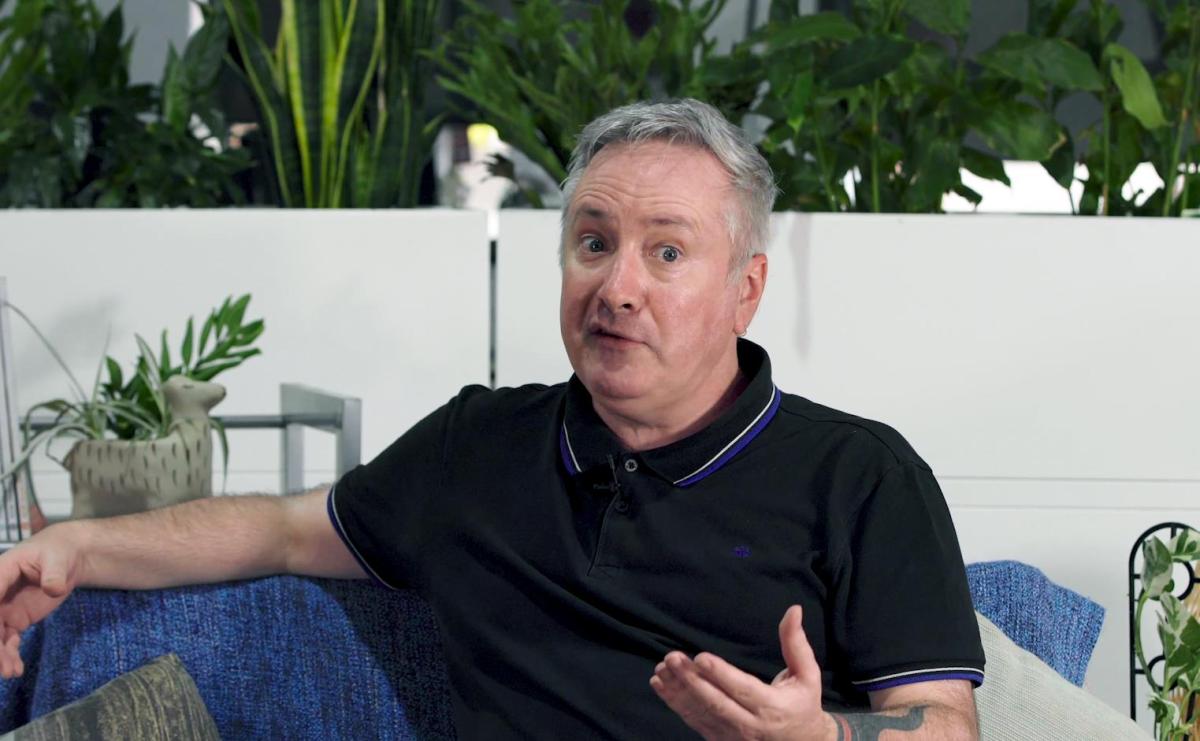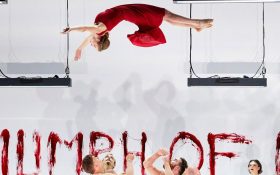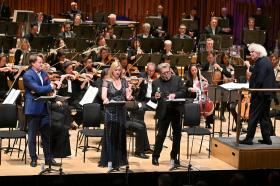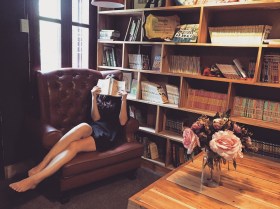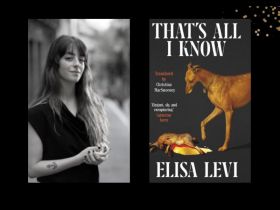Want your art to be discovered more easily or just think your website is getting lost in the noise? In this video we look at how your art can be promoted through social media and on search engine results pages. We explain how the Google search algorithm works, we look at how you can start your own e-newsletter, and we introduce you to social media marketing.
00:32 – Promote your brand name
We acknowledge the Traditional Owners of the land on which this content was created. We pay our respects to Elders, past and present and future.
Watch: Artists Essentials Toolkit video #1: How to get your art online
Other ArtsHub Resources
Why the words you use count in SEO
A Beginner’s Guide to SEO
13 ways to build a strong social media presence
How to social media like a pro
How to make the most of Instagram
It’s great to get your art online, but if you want to really make it stand out there are some digital skills you need in your publicity toolkit. In this video we’ll look at how to promote your brand, the benefits of different social media platforms, the basics of the Google algorithm and how to create content for it, starting your own newsletter and sharing with your artistic community.
00:32 – PROMOTE YOUR BRAND NAME
Branding is all about what sets you apart from the rest. It’s about creating an identity and promoting it within your community.
A quick and easy way to start is with social media. You can promote your artworks, events or latest news, interact as an expert in forums, and present views that will shape your brand identity. Keep it smart and steady. Avoid being a flash in the pan and find that sweet spot between promotion and over-promotion. Be generous and share others’ views and discuss their content as well as spruiking your own.
Think of your message as a cohesive and well-styled story told across the appropriate channels.
01:17 – USING SOCIAL MEDIA
With so much choice it can be hard to decide on which social media platforms suit you best. Depending on your business needs and target audience, Facebook, Instagram, Twitter, Pinterest and LinkedIn can all be great ways to get your work noticed.
Facebook. It’s good for telling your story, and videos work well. You could show video footage of mood boards and the resulting work.
Instagram. Posts should be simple, appealing and mobile friendly, or work well on Instagram Stories and Instagram.TV. You could post in-progress shots from your studio to build that anticipation.
Twitter. Twitter is fast and newsy, so make key information direct and clear. Digital postcards are eye-catching options to let people know new works are available.
LinkedIn. Here’s where you can post specific, expert, career-oriented information about your new work and emphasise the benefits of interacting with it.
Do your research and consider your needs. You could trial each social media platform for a limited time or until you feel that you are on the right track. Then go with your instincts to choose what works best for you and for your art.
Remember, using social media should be (at least a little bit) fun.
02:40 – THE BENEFITS OF MULTI-PLATFORM POSTING
Multi-platform posting is about creating content and re-working it across your social media channels. This keeps your profile active online and helps you grow a larger fan base.
Managing your social media can become huge and exhausting, so block out 1-2 hours each week to schedule posts in advance (using a tool like Hootsuite or Sprout Social) and allot a limited amount of time every day to checking your social media and responding to comments.
The main thing to remember is that you can’t craft one message then just slap it up across all channels.
Each platform has different image specs, different word counts and different formats, so you need to tailor your messages to A) fit within the parameters of the platform and B) be appropriate to how people use it. Even your tone of voice should fit with the platform – more professional for LinkedIn, quicker and snappier for Twitter.
03:39 – SOCIAL MEDIA MARKETING
We’ve talked about social media platforms, but let’s go a little deeper into how to use them to market your art and create a community around your brand.
Things to consider include:
- Which platform. Choose the platform that will best suit what you want to promote.
- Frequency. Consider the lifespan of a post and post accordingly. Think once a day for Facebook, once or twice a day for Instagram, at least three times a day for Twitter and at least twice a week, at the start of the business day for LinkedIn. Spread your posts throughout the day to account for international audiences too.
- Consistency. Get known for being consistently engaged and consistently posting high-quality content. Don’t post the same thing over and over again, spamming your content means you will lose followers.
- Hashtags. Look at the hashtags used for similar artists so your work can be found alongside theirs. Create new ones to start a discussion.
- Maintenance. Take the time to respond to comments from your followers. Comments create an instant dialogue and foster community.
04:50 – THE BASICS OF GOOGLE ALGORITHMS
A search engine finds your art based on an algorithm that’s always being updated to see how people are finding content online. These algorithms determine if people will find your website using Google search, which remains the most popular way of finding anything on the web.
The algorithms take in factors like the words used in the search, your location, and the relevance and freshness of pages, and crawls over all the pages on the web to serve up the most tailored and accurate results.
It’s good to keep these algorithms in mind when you’re posting your own content, so people looking for your art will get served your pages. These algorithms also know when pages are being ‘keyword stuffed’ (by using too many similar words to try and trick that algorithm) and they will rank such pages lower. Google regularly refreshes its algorithms, so if you want to get deeper into this subject, read more on Google’s help pages.
05:51 – BASIC SEARCH ENGINE OPTIMISATION
Now we’re going to look at SEO – Search Engine Optimisation – which just means using the right words so search engines can find your work. It’s about naming your content so it’s easily found online, and you can do that by boosting it with relevant language.
If you run a theatre group in Melbourne, for example, make sure you use those keywords, theatre, Melbourne, up front in your heading and then lightly peppered throughout your content. Then look at other search terms people interested in Melbourne theatre might use – drama, drama classes, plays, that kind of thing. Relevance will help your site get to the top on Google’s results pages.
Don’t use vague, irrelevant words. Always keep the user in mind and craft your content so it finds its way to the people looking for it.
06:42 – KEYWORD RESEARCH
The words you use are really important to the algorithm so spend some time working on which ones best describe your arts practice.
Let’s say you’re a freelance book illustrator. If you were looking for someone like you, what would you search for?
Chances are, other people would search the same way, so see what comes up and which words rank highest on the page. Use this research and use those target keywords wisely within the content on your site. For more indepth analysis and targeted SEO, there are online programs like Semrush out there that will give you suggested keywords to use.
And while we’re here, let’s talk about advertising. So far we’ve talked about ‘organic reach’ – where you’ve used good SEO or Google algorithms pick up your web pages. The other way is paid reach. You know those listings with the ‘ad’ appearing at the start? That’s a paid search. Paid search like Google Ads or Facebook Ads will give you instant results for as long as you pay for the ads. It can be pricey to get the highest ads especially on popular searches like ‘Melbourne comedy’ or ‘best art galleries’.
07:58 – E-NEWSLETTERS
E-newsletters are a classic example of digital marketing and a great way to have a direct dialogue with your audience. They are based on email lists that you might collect at each exhibition or show. If you have a website including a sign up for the newsletter link is the perfect way to build up your audience.
Newsletters appeal directly to your audience, much closer than social and you can tailor content to your fans. Could you offer how-to guides or online tutorials about your practice? They can be a great way to let people who are already fans when you have new artwork available and you can involve them in its creation.
Many website builders include newsletter functionality, or you can set up an account with sites like Mailchimp, Campaign Monitor or others if you want to create an email marketing campaign.
08:51 – CROSS-PROMOTION WITH OTHER ARTISTS
Getting active within your artistic community is an excellent way to get your art noticed and foster new networks and connections.
Take part in forums, share knowledge with other artists and reference them with a link back to their site. Similarly, if an artist mentions you and links to your site (a ‘backlink’), the ripple effect of awareness starts to happen. It’s all part of that idea of being generous with your community.
So these are some of the simple ways that you can get your art noticed. You can mix and match these to suit your work and how much time you want to commit to promotion without taking too much time away from your arts practice.
